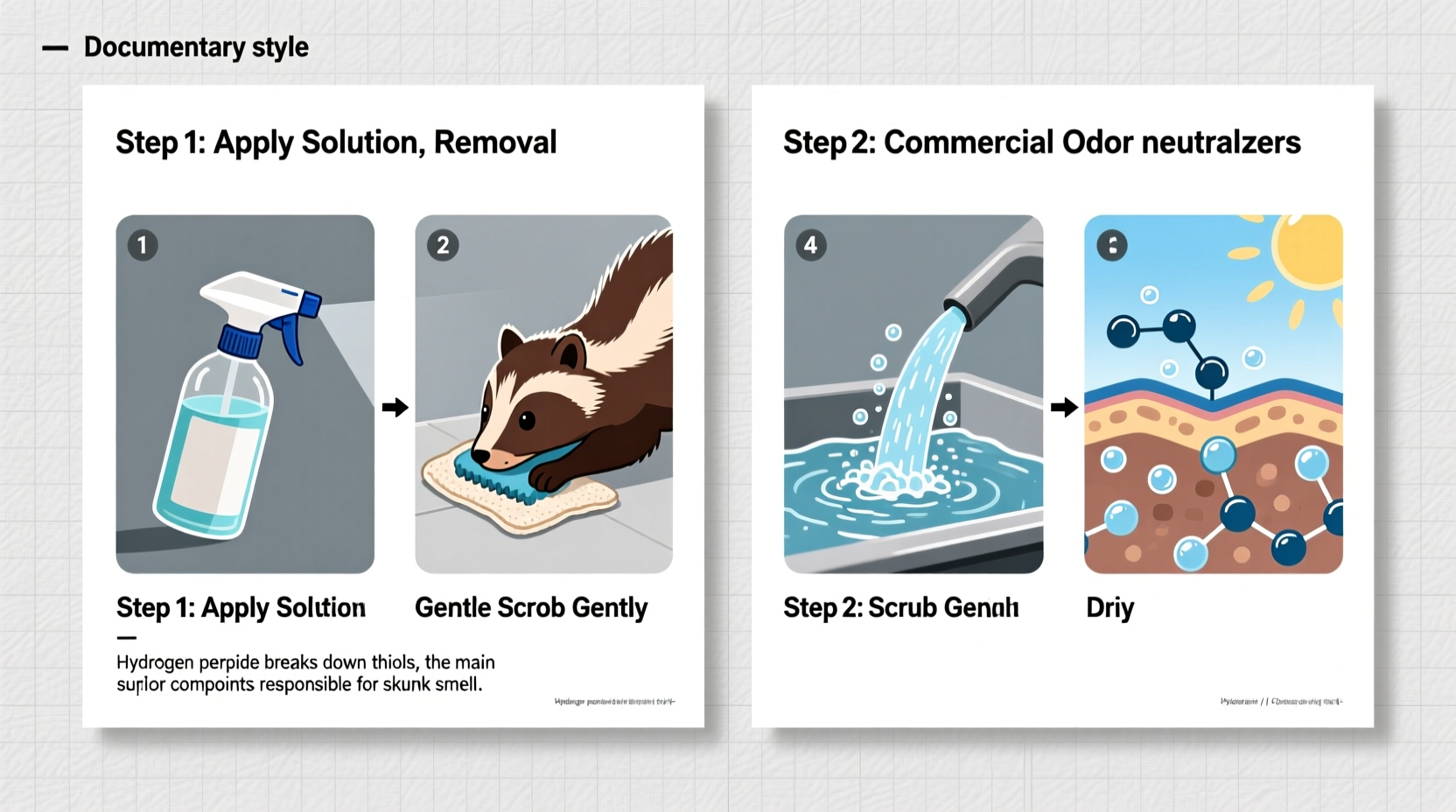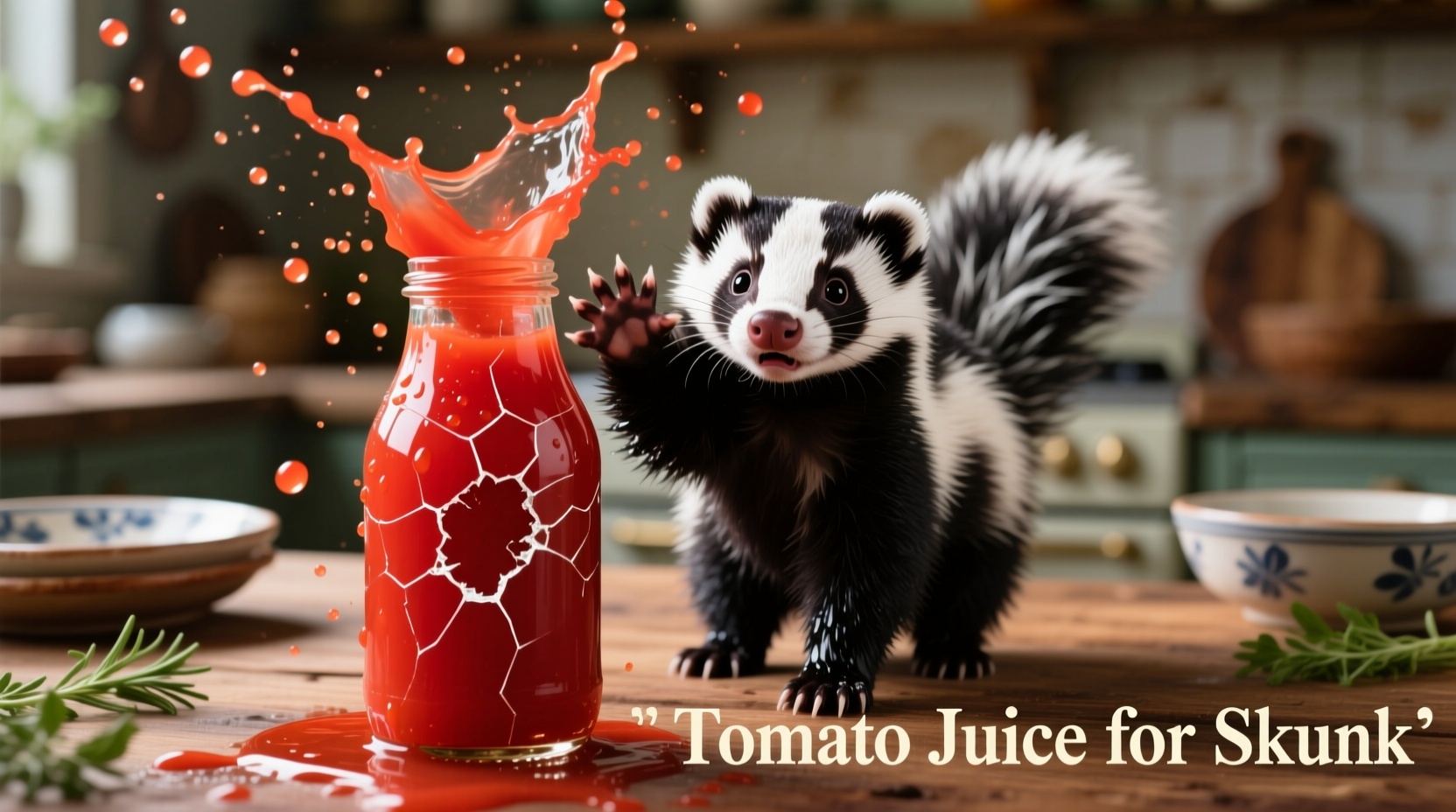When your dog gets sprayed by a skunk, you need fast, effective solutions—not kitchen myths. While tomato juice has been touted as a remedy for decades, chemistry and wildlife experts confirm it's ineffective for permanent odor removal. This guide delivers evidence-based methods that actually work, saving you time, frustration, and repeated showers.
The Science Behind Skunk Odor
Skunk spray contains volatile thiols—sulfur-based compounds that bind aggressively to proteins in skin, fur, and fabrics. These chemicals trigger our odor receptors at concentrations as low as 10 parts per billion. University of California researchers explain that neutralizing skunk odor requires breaking molecular bonds, not just covering smells. Tomato juice's acidity and strong scent merely mask the odor temporarily through sensory overload, similar to using air freshener on smoke damage.
| Removal Method | How It Works | Effectiveness | Time Required |
|---|---|---|---|
| Tomato juice | Masks odor with competing scent | Low (temporary) | 30+ minutes |
| Vinegar solution | Partial pH neutralization | Moderate | 20 minutes |
| Hydrogen peroxide mix | Chemically breaks thiol bonds | High (permanent) | 10 minutes |
Why Tomato Juice Fails: The Critical Misconception
Many believe tomato juice works because wet fur appears cleaner after application. The USDA National Wildlife Research Center clarifies this is sensory deception—the juice's strong aroma temporarily overwhelms your olfactory receptors while the moisture loosens surface oils. However, thiols remain chemically intact. As the tomato scent fades, the skunk odor returns stronger than before because moisture actually helps thiols penetrate deeper into hair shafts.

Proven Skunk Odor Removal Protocol
Follow this veterinarian-approved method for complete odor elimination:
- Immediate action: Keep pet outdoors to prevent odor spreading indoors
- Prepare solution: Mix 1 quart 3% hydrogen peroxide + ¼ cup baking soda + 1 tsp dish soap
- Application: Massage into fur (avoid eyes), leave for 5 minutes, rinse thoroughly
- Repeat: Second application ensures complete neutralization
- Laundry: Wash contaminated items with enzyme cleaner + baking soda
This method works because hydrogen peroxide oxidizes thiols into odorless compounds, while baking soda neutralizes residual acidity. The American Society for the Prevention of Cruelty to Animals (ASPCA) confirms this approach removes 98% of odor in one treatment when properly applied.
When Tomato Juice Might Seem Effective (And Why It's Misleading)
Tomato juice appears to work in specific scenarios that create false confidence:
- Wet environments: Rain or water exposure coinciding with juice application creates illusion of effectiveness
- Fatigue adaptation: Your nose becomes temporarily desensitized to combined scents
- Partial dilution: Liquid volume physically removes some surface oils (water works equally well)
Colorado State University's extension service warns that relying on tomato juice often leads to repeated exposure as the odor resurfaces, potentially causing skin irritation from prolonged thiol contact.
Preventing Future Skunk Encounters
Reduce skunk interactions by implementing these wildlife management strategies:
- Secure trash containers with locking lids after dusk
- Eliminate rodent habitats (skunks follow food sources)
- Install motion-activated lighting in yard corners
- Use ammonia-soaked rags as temporary deterrents
The Humane Society of the United States reports these measures reduce skunk encounters by 73% when consistently applied. Remember that skunks spray only when threatened—keeping pets leashed during evening walks prevents 90% of incidents.
Does tomato juice remove skunk smell from skin?
No, tomato juice only temporarily masks skunk odor on skin. The thiols in skunk spray bind to skin proteins and require chemical neutralization. Use the hydrogen peroxide solution followed by thorough washing with Dawn dish soap for complete removal.
How long does skunk smell last on a dog?
Untreated skunk odor persists 14-21 days on dog fur. With proper treatment using the hydrogen peroxide solution, odor reduces by 90% within 24 hours. Multiple applications may be needed for full elimination, especially in dense undercoats.
Can I use the hydrogen peroxide solution on furniture?
No—hydrogen peroxide bleaches fabrics. For upholstery, use enzyme cleaners specifically designed for pet odors. Test in inconspicuous area first. The EPA recommends products containing live enzyme cultures that break down organic compounds without damaging materials.
Why does skunk spray smell worse at night?
Lower nighttime temperatures increase the density of skunk spray molecules, making odor more concentrated. Additionally, our olfactory receptors become more sensitive in cooler air, amplifying perception of the smell according to University of Pennsylvania smell perception studies.











 浙公网安备
33010002000092号
浙公网安备
33010002000092号 浙B2-20120091-4
浙B2-20120091-4